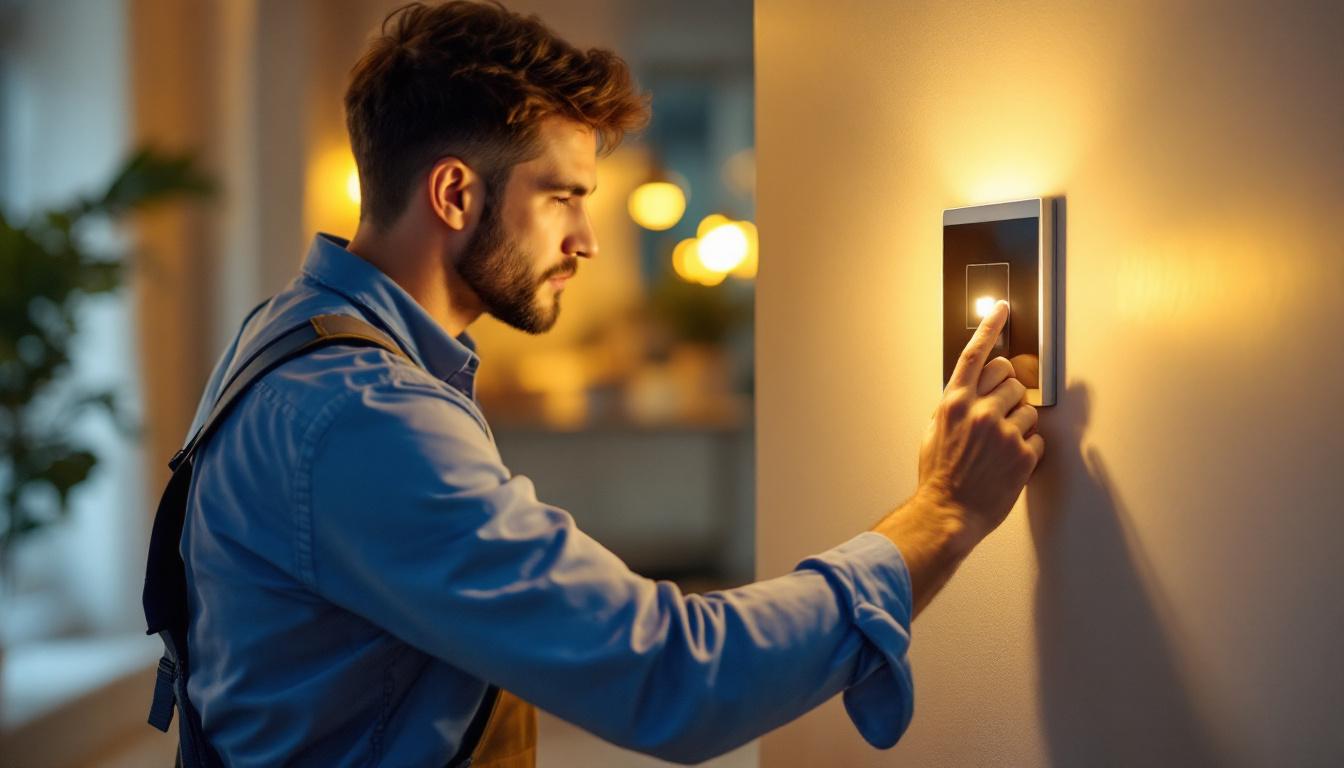
In the world of electrical installations, particularly in the realm of lighting, the importance of proper switch outlet installation cannot be overstated. Lighting contractors play a crucial role in ensuring that homes and businesses are equipped with safe and effective lighting solutions. However, even the most experienced contractors can fall prey to common mistakes when it comes to electrical switch outlets. Understanding these pitfalls can help improve the quality of work and enhance client satisfaction.
Before delving into the common mistakes, it is essential to understand the fundamental aspects of electrical switch outlets. These outlets are not merely functional components; they are integral to the safety and efficiency of electrical systems. An electrical switch outlet serves as a point of control for lighting fixtures, allowing users to turn lights on and off with ease.
Moreover, the design and installation of these outlets can significantly impact the overall aesthetic of a space. Therefore, lighting contractors must consider both functionality and design when working with switch outlets. This dual focus ensures that the installations are not only practical but also visually appealing. The choice of materials, colors, and styles can complement the interior design of a room, enhancing the overall ambiance while providing necessary utility.
There are various types of switch outlets available, each designed for specific applications. Standard toggle switches are the most common, but there are also dimmer switches, three-way switches, and smart switches. Understanding the differences between these types is crucial for contractors. Each type has its own installation requirements and operational characteristics that must be adhered to for optimal performance.
Contractors should also be aware of the compatibility of these switches with the lighting fixtures they are controlling. For instance, a dimmer switch may not work effectively with certain LED bulbs, leading to flickering or reduced lifespan. Ensuring compatibility is a vital step in the installation process. Additionally, the rise of smart home technology has introduced a new layer of complexity. Smart switches often require a Wi-Fi connection and may need to be integrated with home automation systems, which can vary widely in terms of setup and functionality. This means that contractors must stay updated on the latest advancements in technology to provide clients with the best options available.
Furthermore, safety standards and regulations surrounding electrical installations are paramount. Compliance with local electrical codes not only ensures the safety of the installation but also protects homeowners from potential hazards. For example, GFCI (Ground Fault Circuit Interrupter) outlets are essential in areas where moisture is present, such as kitchens and bathrooms, to prevent electrical shocks. Understanding these requirements is critical for contractors to avoid costly mistakes and to guarantee the safety and reliability of their work.
Despite the importance of proper installation, many lighting contractors make mistakes that can compromise the effectiveness and safety of electrical switch outlets. Below are some of the most common errors encountered in the field.
One of the most critical aspects of installing electrical switch outlets is ensuring that the wiring is done correctly. Improper wiring can lead to a host of problems, including short circuits, electrical fires, and malfunctioning switches. It is essential for contractors to follow the National Electrical Code (NEC) guidelines and local regulations when wiring outlets.
Additionally, using the right gauge of wire is crucial. Using wires that are too thin can result in overheating and potential hazards. Contractors should always verify that the wire gauge is appropriate for the load that the switch will handle. This attention to detail can prevent serious safety issues down the line.
Grounding is a fundamental safety feature in electrical installations. Unfortunately, some contractors overlook grounding requirements during switch outlet installations. Grounding helps protect users from electric shock and prevents damage to electrical devices. Failing to ground a switch outlet properly can expose clients to unnecessary risks.
Contractors should ensure that all switch outlets are connected to a grounding system, using the appropriate grounding wires. This step is especially important in areas prone to moisture, such as kitchens and bathrooms, where the risk of electrical shock is heightened.
The placement of electrical switch outlets is another area where mistakes frequently occur. Selecting the wrong location can lead to inconvenience and dissatisfaction for clients. Lighting contractors must consider both functionality and accessibility when determining where to install switch outlets.
One common mistake is installing switch outlets at inappropriate heights. Switches should be easily accessible to users, typically installed at a height of 48 inches from the floor. If switches are placed too high or too low, they may become difficult to reach, particularly for children or individuals with mobility challenges.
Additionally, the location of switch outlets should be strategically planned to avoid obstructions. For instance, placing a switch behind a door or furniture can render it useless. Contractors should take the time to assess the layout of the room and ensure that switches are conveniently located for everyday use.
Another aspect to consider when choosing locations for switch outlets is the specific lighting needs of the space. Different areas may require different types of lighting controls, such as dimmers or three-way switches. Failing to assess the lighting requirements can lead to inadequate control over the lighting environment, leaving clients frustrated.
Contractors should engage with clients to understand their preferences and needs regarding lighting. This collaborative approach can result in more effective installations and enhanced client satisfaction.
Compliance with local electrical codes and regulations is paramount for any electrical installation. Many contractors, particularly those new to the field, may overlook these requirements, leading to potential legal issues and safety hazards.
Each region has its own set of electrical codes that dictate how installations should be carried out. These codes cover everything from wiring methods to safety measures. Ignoring these regulations can result in fines, rework, and even jeopardize the safety of the installation.
Contractors should invest time in understanding the local codes applicable to their work. This knowledge not only ensures compliance but also enhances the reputation of the contractor as a knowledgeable and responsible professional.
In addition to adhering to local codes, obtaining the necessary permits before starting any electrical work is crucial. Many jurisdictions require permits for electrical installations to ensure that the work is inspected and meets safety standards. Failing to secure these permits can lead to complications during inspections and may require costly rework.
Contractors should familiarize themselves with the permitting process in their area and ensure that all necessary documentation is in order before commencing work. This proactive approach can save time and resources in the long run.
Effective communication with clients is essential for successful electrical installations. However, many lighting contractors neglect this aspect, leading to misunderstandings and dissatisfaction. Clear communication can help set expectations and ensure that clients are informed throughout the process.
One common mistake is failing to set clear expectations with clients regarding the scope of work, timelines, and costs. Clients should be made aware of what to expect during the installation process, including any potential disruptions or delays. This transparency fosters trust and helps prevent conflicts down the line.
Contractors should take the time to discuss the project in detail with clients, addressing any questions or concerns they may have. This open dialogue can lead to a more positive experience for both parties.
After the installation is complete, many contractors neglect to follow up with clients. Providing post-installation support is crucial for ensuring client satisfaction and addressing any issues that may arise. Contractors should be available to answer questions or provide assistance if clients encounter problems with their switch outlets.
By offering ongoing support, contractors can build lasting relationships with clients and enhance their reputation in the industry. Satisfied clients are more likely to refer contractors to others, leading to potential new business opportunities.
The quality of materials used in electrical installations can greatly impact the performance and safety of switch outlets. Unfortunately, some contractors may opt for lower-quality materials to save costs, which can lead to significant issues down the line.
When selecting switch outlets and related components, contractors should prioritize reliability and safety. Investing in reputable brands ensures that the products meet safety standards and perform as intended. Cheap materials may save money upfront but can lead to costly repairs and replacements in the future.
Contractors should conduct research and seek recommendations for trusted brands in the industry. This diligence can help ensure that installations are durable and reliable, ultimately benefiting both the contractor and the client.
After installation, it is essential to test the functionality of switch outlets. Some contractors may overlook this step, assuming that everything is working correctly. However, testing ensures that the outlets are functioning as intended and can help identify any potential issues before the client takes possession.
Contractors should implement a thorough testing process, checking for proper operation, grounding, and any signs of electrical issues. This proactive approach can prevent future problems and enhance client satisfaction.
Electrical switch outlets are a vital component of any lighting installation, and avoiding common mistakes can significantly enhance the quality of work performed by lighting contractors. By understanding the basics of switch outlets, adhering to local codes, communicating effectively with clients, and utilizing quality materials, contractors can improve their installations and ensure client satisfaction.
Awareness of these common pitfalls can empower lighting contractors to elevate their work and build a reputation for excellence in the industry. Continuous education and attention to detail are key to avoiding mistakes and achieving success in electrical installations.
Don’t let common installation mistakes compromise your lighting projects. At LumenWholesale, we provide lighting contractors with the high-quality, spec-grade lighting products you need to ensure every job is done right. With unbeatable wholesale prices and a vast selection that meets the highest industry standards, you can trust in our products to enhance your installations. Say goodbye to inflated markups and hello to hassle-free bulk buying with free shipping. Elevate your lighting solutions and give your clients the best value by choosing Wholesale Lighting at the Best Value with LumenWholesale.

Discover why lighting contractors should prioritize mirror LED installations in their projects.

Discover the benefits of solar lighting for patios in this comprehensive guide.

Discover the essential insights lighting contractors need to know about push switch lights.

Discover how the Type G Light Bulb 25 Watt revolutionizes efficiency for lighting contractors.